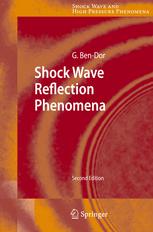

Most ebook files are in PDF format, so you can easily read them using various software such as Foxit Reader or directly on the Google Chrome browser.
Some ebook files are released by publishers in other formats such as .awz, .mobi, .epub, .fb2, etc. You may need to install specific software to read these formats on mobile/PC, such as Calibre.
Please read the tutorial at this link: https://ebookbell.com/faq
We offer FREE conversion to the popular formats you request; however, this may take some time. Therefore, right after payment, please email us, and we will try to provide the service as quickly as possible.
For some exceptional file formats or broken links (if any), please refrain from opening any disputes. Instead, email us first, and we will try to assist within a maximum of 6 hours.
EbookBell Team

4.0
86 reviewsThis book provides a comprehensive state-of-the-knowledge description of the shock wave reflection phenomena from a phenomenological point of view.
The first part is a thorough introduction to oblique shock wave reflections, presenting the two major well-known reflection wave configurations, namely, regular (RR) and Mach (MR) reflections, the corresponding two- and three-shock theories, their analytical and graphical solution and the proposed transition boundaries between these two reflection-wave configurations.
The second, third and fourth parts describe the reflection phenomena in steady, pseudo-steady and unsteady flows, respectively. Here, the possible specific types of reflection wave configurations are described, criteria for their formation and termination are presented and their governing equations are solved analytically and graphically and compared with experimental results.
The resolution of the well-known von Neumann paradox and a detailed description of two new reflection-wave configurations - the Guderely reflection (GR) and Vasilev reflection (VR) - are also given.
The fifth part is a detailed listing of the most relevant scientific papers and research reports that have been published so far in the field of shock wave reflection phenomena.
Intended as both introduction and reference, this book will benefit scientists and engineers in shock wave related academic and industrial research and development, as well as graduate students wishing to specialize in the field.